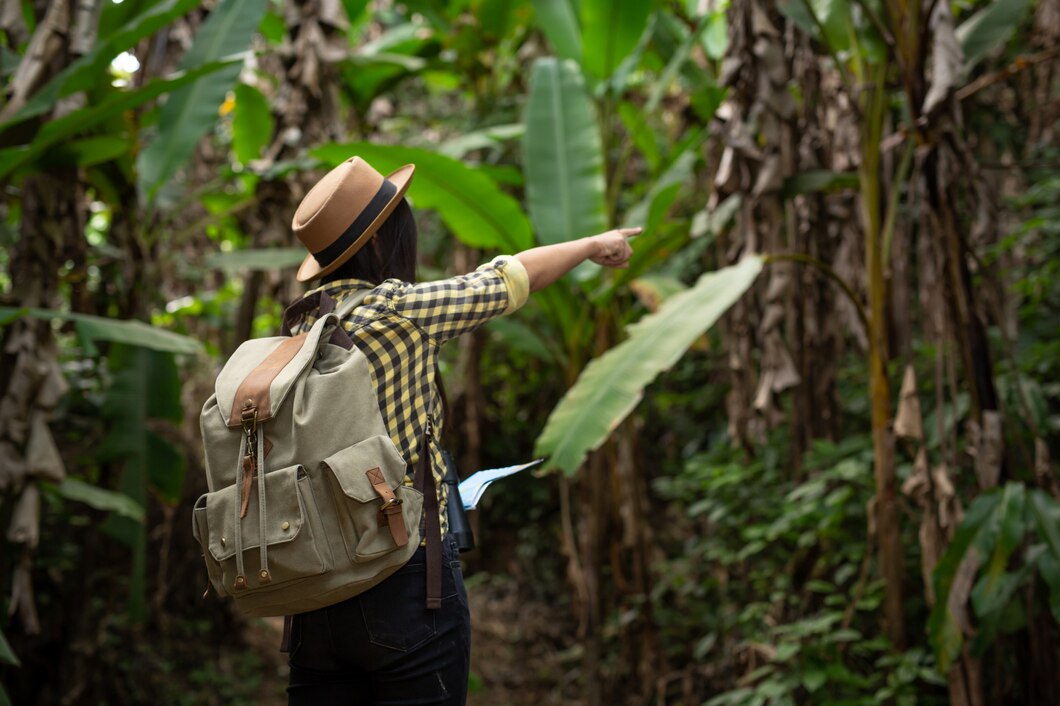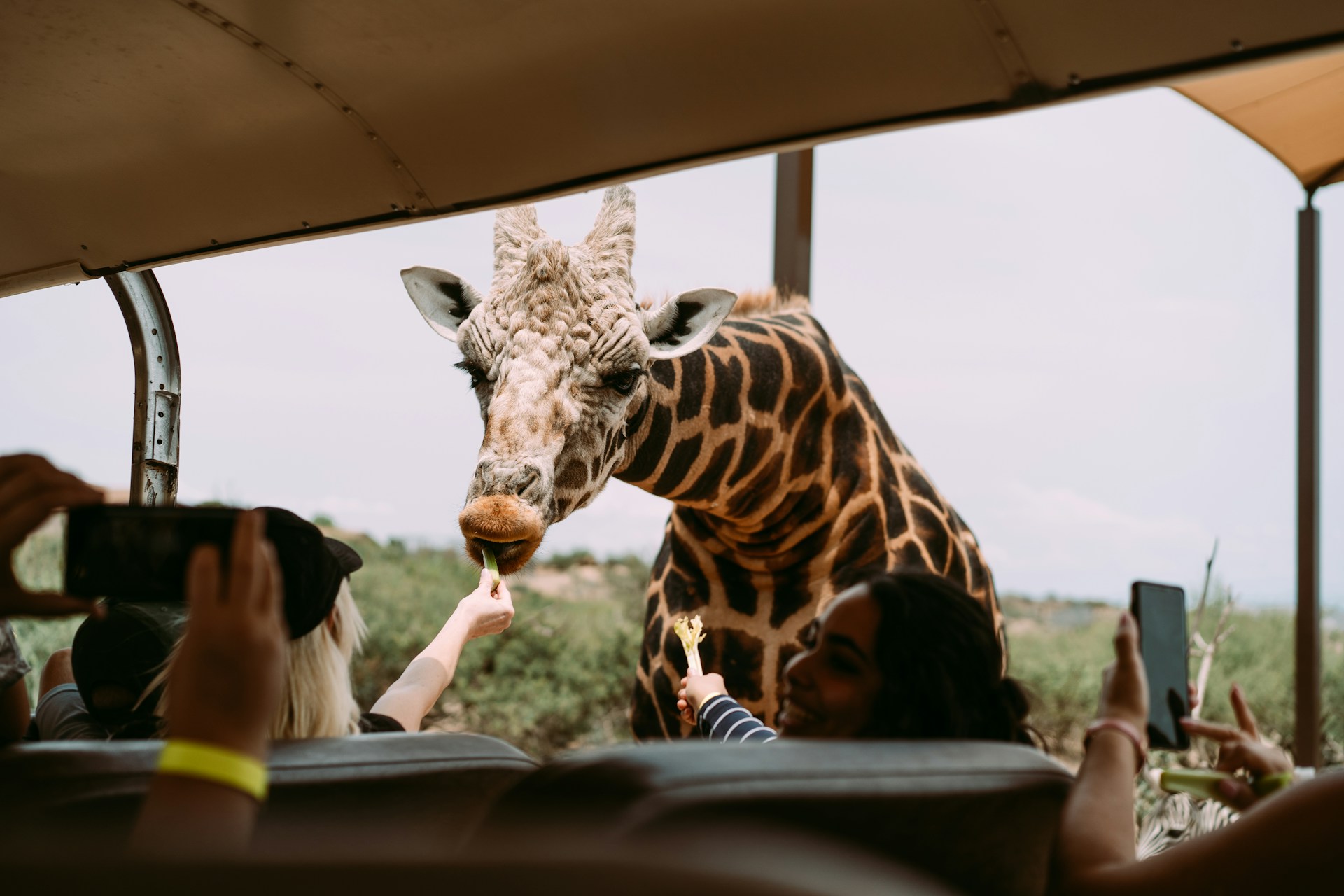Wildlife tourism allows you to see remarkable animals in their natural homes. But not all wildlife encounters are positive. Others harm animals, ruin ecosystems and exploit local people. Responsible wildlife travel helps make sure your adventures support conservation, not exploitation. This guide explains how to seek out eco-friendly safaris and ethical animal encounters. These experiences help support wildlife and promote sustainability.
What Is Ethical Wildlife Tourism?
Ethical wildlife tourism considers the welfare of animals and ecosystems. It helps natural habitats, supports conservation, and avoids places that profit from exploiting animals.
Key Principles of Ethical Wildlife Tourism:
- Observe, Don’t Disturb: Stay back from animals and don’t interrupt what they’re doing.
- Avoid Direct Contact: Avoid touching, riding, or feeding wild animals.
- Support Conservation Efforts: Pick tour operators that support habitat protection and wildlife research.
- Engage with local communities. Empower them both economically and culturally.
- Choose Eco-Friendly Practices: Select eco-friendly safaris with sustainable options like solar-powered lodges.
Quick Guide: Key Rules for Ethical Wildlife Tourism
- Observe wildlife without disturbing their natural behaviour
- Avoid attractions involving animal performances, selfies, or rides
- Choose eco-certified tour operators that support conservation
- Respect local cultures and support community-run tourism
- Stay at sustainable lodges and avoid single-use plastics
Pro Tip
If an experience lets you ride, touch, or take selfies with wild animals, it’s likely unethical. When in doubt, walk away—real wildlife experiences don’t involve contact.
Important
Always research sanctuaries before visiting. Ethical ones don’t breed for entertainment, don’t allow hands-on interaction, and prioritise animal welfare above tourist entertainment.
How to Identify Responsible Wildlife Travel Experiences

Choose Accredited and Ethical Tour Operators
Research tour companies before booking. Look for operators certified by groups like the Global Sustainable Tourism Council (GSTC) or the World Wildlife Fund (WWF).
Questions to Ask Before Booking:
- Does the operator follow ethical wildlife interaction guidelines?
- Do they support conservation or local communities?
- Are their activities designed to reduce environmental impact?
Visit Ethical Animal Sanctuaries
Sanctuaries can be great for seeing wildlife, but not all are ethical. A true sanctuary cares for animals, avoids breeding for profit, and doesn’t let visitors touch the animals.
How to Spot an Ethical Sanctuary:
- Animals roam freely in natural enclosures.
- No petting, selfies, or performances are allowed.
- Focus on rehabilitation and conservation.
Say No to Exploitative Activities
Many attractions exploit wildlife for entertainment, causing harm. Avoid these:
- Elephant Rides: Training methods can be cruel. Visit ethical sanctuaries instead.
- Tiger Selfies: Facilities often drug or chain tigers to keep them calm.
- Dolphin Shows: Captive dolphins suffer stress and poor living conditions.
- Walking with Lions: Many “rescue” programs breed lions for canned hunting.
By avoiding these activities, you support genuine ethical animal encounters rather than exploitation.
Eco-Friendly Safaris: The Future of Wildlife Tourism

Eco-friendly safaris blend wildlife conservation with sustainable travel. They ensure that tourism benefits nature and local people. These safaris focus on responsible viewing and education.
What Makes a Safari Eco-Friendly?
- Sustainable Lodges: Choose places that use renewable energy and recycle waste.
- Low-Impact Transportation: Walking safaris and electric vehicles help reduce ecological footprints.
- Knowledgeable Guides: Ethical guides educate visitors on wildlife and conservation.
- Strict Animal Welfare Policies: Operators should avoid off-road driving and not disturb animals.
Top Destinations for Eco-Friendly Safaris
Kenya and Tanzania: They are famous for the Maasai Mara and Serengeti. They offer sustainable lodges and support conservation projects.
Botswana: Known for low-impact, high-quality safaris that protect wilderness.
Namibia: Features eco-lodges and conservation in desert areas.
Costa Rica: Protects rainforests and marine life, ideal for responsible wildlife travel.
India: Hosts tiger reserves like Ranthambore that encourage ethical tourism.
Ethical Animal Encounters: How to Interact with Wildlife Responsibly

Wildlife encounters can be amazing, but they must be ethical. Follow these guidelines:
Observe from a Distance
Never touch or feed wild animals. Keep your distance and use binoculars or zoom lenses to watch them.
Travel in Small Groups
Large crowds can stress animals. Choose small-group tours for better wildlife viewing.
Avoid Artificial Feeding
Feeding wild animals changes their behaviour and makes them dependent on humans. Ethical tourism lets animals forage naturally.
Respect Protected Areas
Stay on designated paths and follow local rules. Avoid disturbing nesting sites and fragile ecosystems.
Support Conservation Projects
Choose experiences that promote conservation. For example, go on guided walks with local rangers or volunteer at rescue centres.
Supporting Local Communities Through Responsible Tourism
Ethical wildlife tourism also empowers local communities. Sustainable tourism should benefit those living near wildlife.
How to Travel Responsibly:
- Stay in local lodges and guesthouses.
- Hire local guides and support indigenous tourism.
- Buy ethical souvenirs that support local craftspeople (avoid ivory, coral, or animal skins).
- Respect local customs and traditions.
By choosing responsible wildlife travel, you help economic growth and promote conservation.
FAQs: Ethical Wildlife Tourism
1. What is ethical wildlife tourism, exactly?
It’s a form of travel that respects animal welfare, protects habitats, and benefits local communities. It avoids activities that exploit or stress animals for entertainment.
2. Are all animal sanctuaries ethical?
No. Some masquerade as sanctuaries but breed or exploit animals for profit. Look for organisations that focus on rescue, rehabilitation, and education—not interaction or shows.
3. Is it ever okay to feed wild animals?
Feeding wildlife is discouraged. It can lead to unhealthy dependency, disrupt natural foraging habits, and increase human-wildlife conflict.
4. What makes a safari eco-friendly?
Eco-safaris use renewable energy, limit environmental impact, hire local guides, support conservation, and educate guests about animal welfare and habitat protection.
5. How can I make sure my trip benefits local communities?
Stay in locally owned lodges, hire local guides, buy ethical handmade goods, and respect cultural norms. Supporting community-led tourism keeps money in the region and builds conservation partnerships.
Conclusion
Ethical wildlife tourism supports conservation, protects animals, and helps local communities. Your choices matter. You can explore eco-friendly safaris, visit sanctuaries, or enjoy ethical animal encounters. Follow our blog to ensure your experiences help create a sustainable future for people and wildlife. Travel responsibly, and let your adventures protect nature for future generations!
Read our blog to learn more about 10 National Parks that should be on your travel list.

